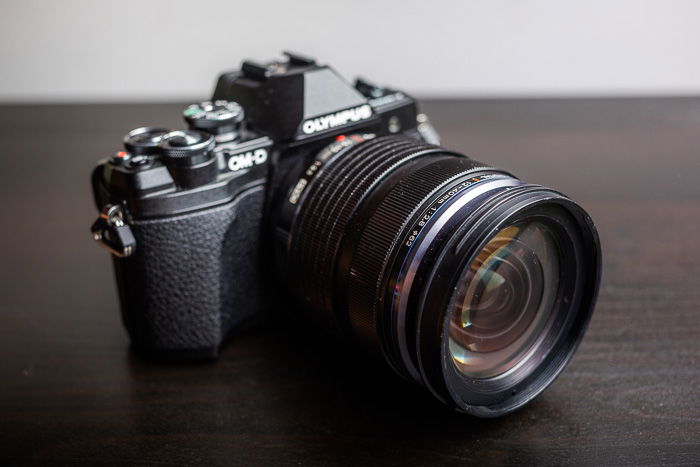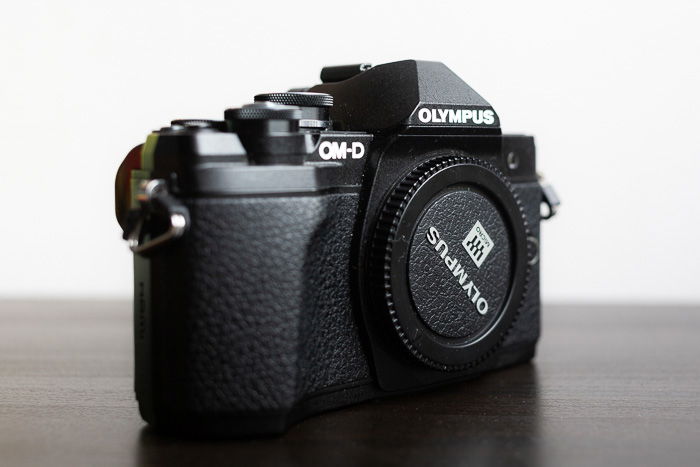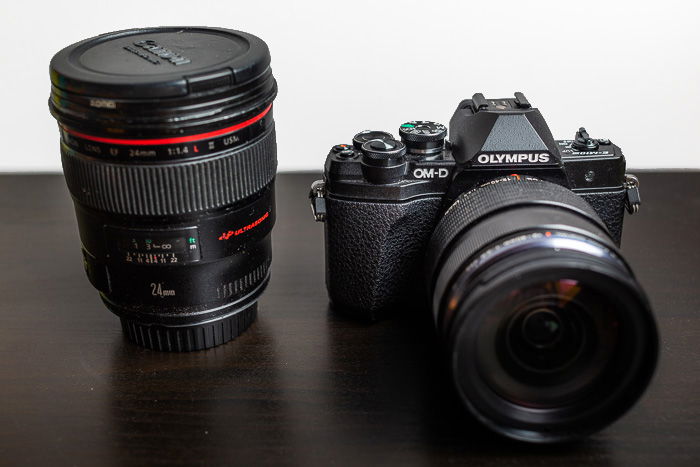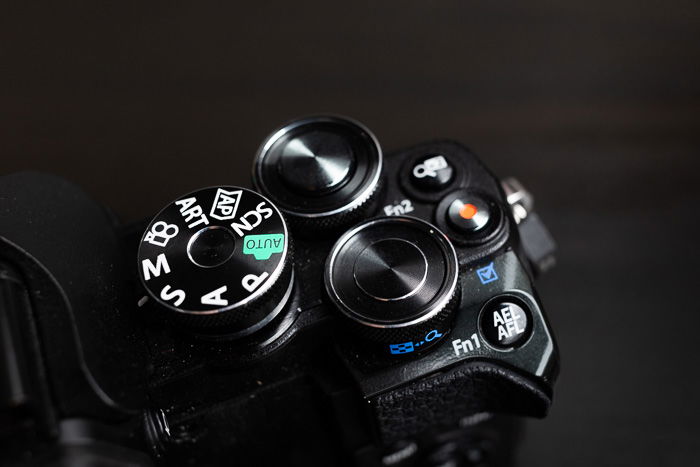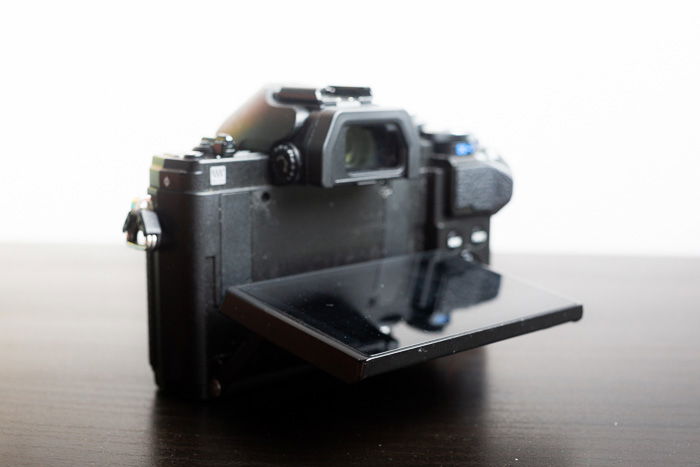Olympus OM-D E-M10 Mk III Review 2024 (Read Before You Buy)
The Olympus OM-D E-M10 Mk III is a powerful camera that has many features that are perfect for photographers of all levels. This camera was designed with a range of shooting styles in mind. And it can be used for everything from travel photography to nature shots. The Olympus OM-D E-M10 Mk III also has a powerful autofocus system that makes it easy to take great photos of fast-moving subjects.
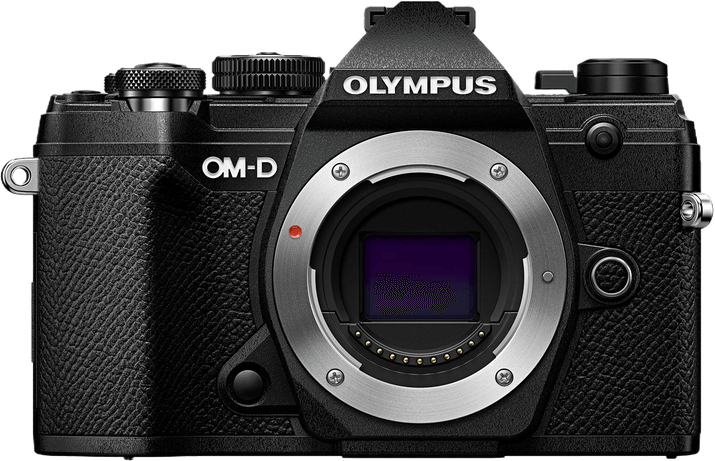
Olympus OM-D E-M10 Mark III Overview and Specifications
Olympus OM-D E-M10 Mark III

| Sensor Format |
Sensor Format
|
| Lens Mount |
Lens Mount
Micro 4/3
|
| Megapixels |
Megapixels
16 MP |
| Autofocus Points |
Autofocus Points
121 |
| Maximum ISO (Native) |
Maximum ISO (Native)
25,600 |
| Frame Rate |
Frame Rate
8.6 fps |
| In-body Stabilization |
In-body Stabilization
|
| Video |
Video
|
The E-M10 MkIII is the third iteration of the E-M10 line, Olympus' offering for those just getting into photography. It's an incremental improvement over the Mk II version. It brings nothing groundbreaking to the table, but it fills notable gaps.
The E-M10 Mk III is built around the Micro Four Thirds system of mirrorless interchangeable lens cameras. It has a portable design, a Micro Four Thirds sensor, and advanced features that create a fantastic user experience.
Looking at its price, it falls into a competitive part of the photography market. But as you will see in this review, much of the competition doesn't really pose a viable alternative. The real choice is narrowed down to only a few options.
Please note that I have tested this camera with the M.Zuiko 12-40mm f/2.8 Pro lens. It's an expensive, almost professional-level lens. To avoid giving a false impression of image quality, I have not included many sample images in this review.
The image quality is good, but it's not what sets the E-M10 Mk III apart.
Base Features
Mount and Compatibility
The E-M10 Mk III is built around the Micro Four Thirds (MFT) mount and system. A key point of this system is that it offers high-quality images at a tiny size compared to DSLRs or larger mirrorless systems. Sensors in this system are 13 x17mm, which is smaller than APS-C sensors.
Not only are the camera bodies small, but thanks to the reduced sensor size, lenses can be scaled down as well. In an age where noise levels are hardly a concern at any reasonable ISO, this is an appealing factor for many.
Besides Olympus, a handful of camera makers use this mount, including Panasonic and Blackmagic. And even more lens manufacturers build lenses for it, which is a significant consideration when investing in a system. Third-party companies like Sigma offer fantastic and low-cost lens options. You can also adapt larger lenses designed for larger sensors.
Sensor
The E-M10 Mk III has a 16 MP Micro Four Thirds sensor. While it's not the newest generation of MFT sensors, this is acceptable in an entry-level camera. The standard in the MFT world is usually between 16 and 20 megapixels.
The dynamic range of this sensor is quite good despite its smaller size. During my testing, it seemed to achieve around 11 to 12 stops in daylight conditions. But this diminishes to around 7 stops at ISO 6400. Please note that this was not in any way a scientific examination. I just put it against my Canon 5D Mk III, as I know exactly how that performs.
Low-light noise levels are nothing extraordinary, as you’d expect. However, images are completely usable up to ISO 6400. One thing I recommend is turning off noise reduction, or at least using it at its lowest setting. It's very overpowering otherwise, making the images look very soft at higher ISOs.
In any condition, I prefer noise over the blurry mess such algorithms usually produce. If you develop your RAW files yourself, you can take care of it during post-processing and do a much better job.
This sensor is stabilized with a 5-axis motor. According to Olympus, it gives you 4 stops of shake reduction. And in my experience, I believe this is accurate. This is a known advantage of the MFT system. Small sensors have more space to move and less momentum, leading to more effective stabilization.
In video mode, the mechanical IS can be complemented with an electronic stabilization algorithm. This applies a slight crop to the footage and you can't use cinematic shutter speeds. But it can smooth out slight hand movement very well.

Very decent dynamic range, but some shadow detail is lost in scenes like this.
Autofocus
A key area where the E-M10 Mk III is a little bit behind is autofocus performance. It’s not bad, but it’s not great, either. This is a bit of a limitation depending on what kind of photography you’re shooting.
The autofocus relies solely on contrast detection. This is the traditional (and usually subpar) method for autofocusing in mirrorless cameras. There is no phase detection. Tracking has been improved over the Mk II version, but it still doesn't do wonders.
So, don't expect the split-second snap performance some PDAF systems offer. With long lenses, it's almost unusable for fast action and sports. It also hunts in low light more often than usual, but it eventually finds a firm focus. For general and non-autofocus-intensive purposes, it's perfectly appropriate.
Video Features
The E-M10 Mk III was one of the first in its class to feature proper 4K video recording. On paper, it doesn't offer anything spectacular. But the footage you get looks surprisingly nice. This is the result of a few different factors.
One is the great built-in color profiles that Olympus offers. They reproduce color in a pleasing, neutral way without going overboard.
Another is the exceptional hybrid stabilization system. With the IBIS and the electronic IS combined, the shake of your hands (and even larger movements!) become silky smooth. I reckon this could be somewhere around 6 stops of reduction, but that's only a guess.
Both the mic and the headphone jack are missing. This might be a dealbreaker for more serious video makers. But for casual video shooters, this is an excellent video camera, especially for the price.
Body and Handling
When I got my hands on the E-M10 Mk III, I thought I received the wrong camera. It doesn't handle or feel like an entry-level model.
It's small and lightweight at 122 x 84 x 50mm and 410 g. It's constructed of plastic, but it’s high-quality plastic.
Controls and dials are conveniently placed. Besides the four-way controller on the back, which is wobbly, all of them are firmly in place and have a clear response.
Despite the small size, the grip is comfortable—more so than the likes of the Fujifilm X-T20 and X-T30. But the placement of the right-side strap holder joint is annoying. It was continuously in the way of one of my fingers.
If you plan to use this camera without a strap, I recommend completely removing the loose part of the joint. This won't remove the problem. But it will mitigate it enough that the back buttons are more accessible.
On the back of the camera lies a 3-inch touchscreen. It allows you to do many things by touching it, but navigating the menu isn’t one of them for some reason. Its primary use is touch-and-focus.
One of my favorite features is that you can actually shoot photos without pressing the shutter button. There's a quickly available function that switches to touch-and-focus-and-expose. This is beneficial in many situations, like when you’re shooting from a high or low angle.
It's also great for street photography, as you can remain more inconspicuous. If people don't see your finger hovering over the shutter button, they behave more candidly.
The screen is bright enough to be your main interface most of the time. But there is also an excellent electronic viewfinder in the E-M10 Mk III. This has been another pleasant surprise for me. This EVF is larger and looks better than many EVFs in high-end mirrorless cameras. It should be a more heavily advertised feature because it sets this little Olympus apart.
A less pleasant surprise is that the SD card is placed right next to the battery, under the same door. I can see that a separate door on the side might not be feasible in such a small device, but this is not a great design decision.
Also, this single battery door is obstructed by any large tripod plate. If you want to change the card or battery during a tripod shoot, you have to disassemble the whole setup. For shooting longer videos or time-lapse photos, this is bad news.
Speaking of the battery, a full charge will give you between 250 and 350 shots. This is nowhere near a DSLR, but also not very bad. But you’ll want to bring spare batteries for longer shoots, just in case.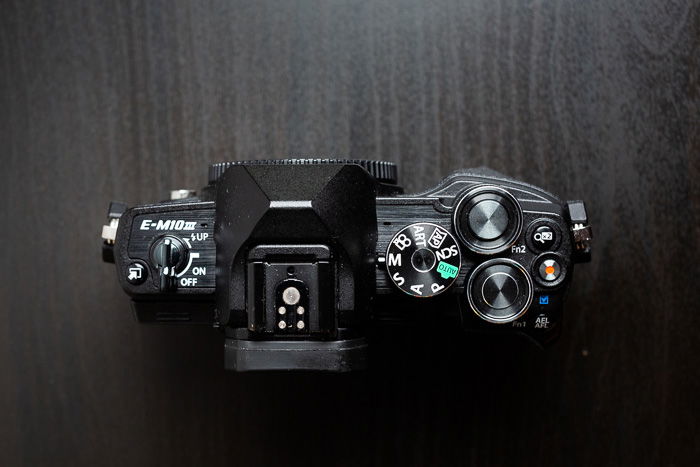
Alternatives to the Olympus OM-D E-M10 Mk III
The most direct alternative to the E-M10 Mk III is the Panasonic GX85. Built around the same MFT mount, this camera offers similar performance, with differences in the details.
The Fujifilm X-T20 offers the advantages of the APS-C sensor size. But it lags behind in other aspects, such as 4K video. It's also a larger system because of the APS-C sensor, but not as large as a comparable DSLR.
There are also plenty of DSLRs in this price range. But they're not true competitors, neither in size nor features.
Our Verdict
The E-M10 Mk III is a very likable little camera. It has the potential to make the perfect travel or casual photography tool.
The great combination of modest price, small size, and high value will appeal to many photographers.
Scores
[scores price="no" product="29572″ tag="expertphotog-20″ toc="no" left_title="Measurement" right_title="Score"]

